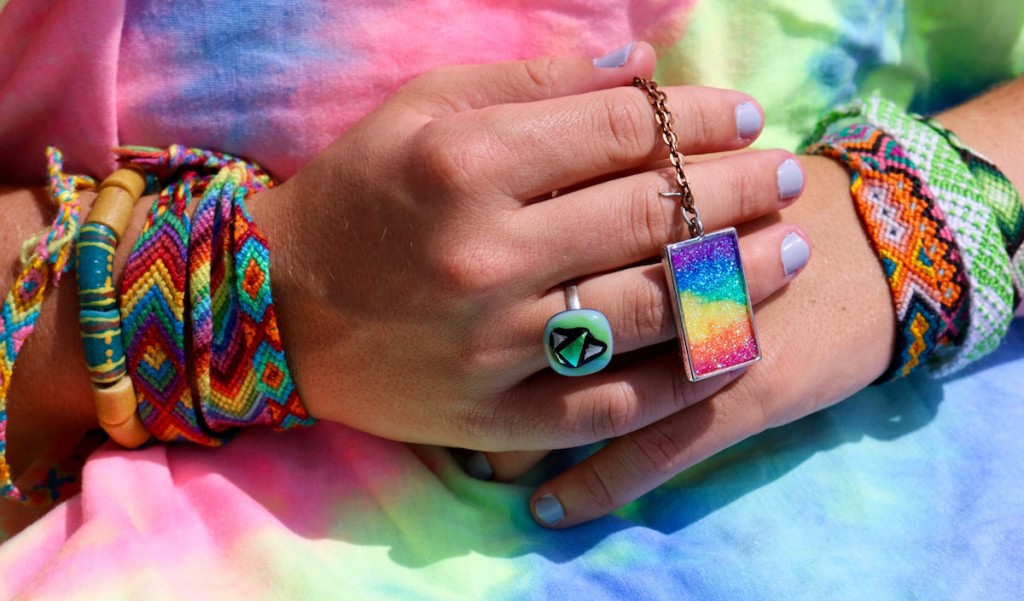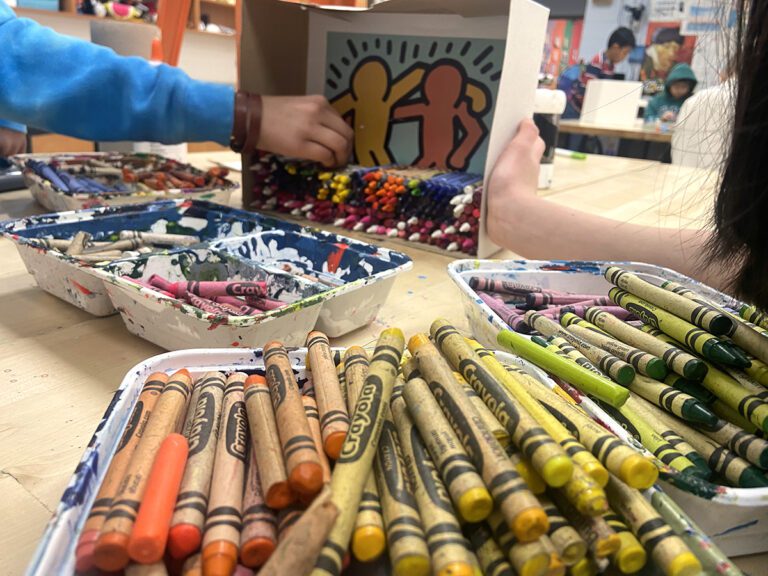When people think about “conventional art,” most may envision wall décor or sculpture. As art teachers, we know this is far from the truth. Sometimes the best way to display artwork for all to see is by wearing it. Have you ever tie-dyed or created silkscreen t-shirts with your students? If you have, you’ll find your students wearing their art for months to come.
Another way to encourage the use of wearable art is through jewelry making.

Not all art teachers see a place for jewelry in the classroom. In a recent episode of Art Ed Radio, the topic of crafts was discussed, and jewelry can fall into this category. It’s okay to have mixed feelings about whether or not it belongs in your classroom but keep in mind, working with jewelry allows students to use basic design concepts to create original pieces. Quality craftsmanship is a major focus while studying cultural, contemporary, and historical ornamentation and design of jewelry.
If you’ve been looking for more ways to incorporate jewelry making into your classroom check out these five techniques to use with your students.
1. Friendship Bracelets

When discussing jewelry as crafts, the idea of the friendship bracelet probably comes to mind first. Maybe you’re taken back to summer camp, but there can also be a place for friendship bracelets in the classroom. History surrounds these string bracelets dating as far back as 481 B.C. If you incorporate a fiber arts or weaving unit, consider adding in this jewelry making technique. There are hundreds of designs to meet all skill levels. Friendship bracelets can be a great side project when you have a larger project that only a few students can work on at a time.
2. Resin Jewelry

Working with resin in the classroom can often be overlooked because of budgetary issues. When using resin for jewelry making, a little bit can go a long way. However, creating resin jewelry will intrigue your students to work meticulously on a small scale. Molds or trivets can be used and filled with any small objects, even candy! Students often incorporate small drawings or paintings into these wearable masterpieces. The possibilities for your students to create are endless!
3. Paper Pendants

If you’re looking for a way to use up scraps of construction paper, creating paper pendants is just what you need. To do this, students should create a template and cut out the shape 25-30 times. Making sure to alternate colors, the construction paper shapes can simply be glued together into a small stack. Once the glue is dry, use sandpaper and rasps to sand down the edges and reveal the beautiful colors. This can be a time-consuming process, so consider teaming up with your industrial technology teacher and using some power sanders. To finish the piece, drill a hole through the pendant, seal with a clear gloss, and add a string.
4. Clay Beads and Pendants

If you’re short on time and limited on clay, consider making clay jewelry. Creating clay pendants is a wonderful way to explore texture and to try out some alternate glazing methods with your students. It may also be a good opportunity to try out a new clay technique, like sgraffito, on a small scale. Using clay to create beads is another way to refine craft, explore techniques, and create fashionable art.
5. Glass Fusion

Did you know you can use your ceramic kiln to fuse glass? For a detailed guide on how to start, check out this article. The actual process of cutting and arranging the pieces is not difficult, and the end result is fascinating. If you’re interested in the glass fusion process, creating jewelry is a wonderful place to start. Since students will be working on a small scale, a little glass will go a long way. Glass fused pieces can be turned into anything by simply using the right adhesive or resin to set the findings.
Creating wearable art is an exciting way to engage and create with students. Jewelry in the classroom might come with a stigma, but a lot can be learned from the process. Try any of these five jewelry making processes to discover fashionable success.
What jewelry making techniques do you use in your classroom?
Do you think jewelry has a place in the art room?
Magazine articles and podcasts are opinions of professional education contributors and do not necessarily represent the position of the Art of Education University (AOEU) or its academic offerings. Contributors use terms in the way they are most often talked about in the scope of their educational experiences.




